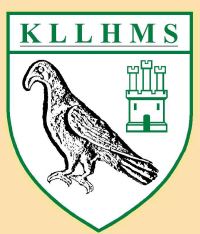Flora and Local History: a book review related to a local canal walk by John Prime
This article first appeared in the KLLH&MS Newsletter No 37 March 1999
(Mabey, Richard; Flora Britannica; Sinclair Stevenson; (1996); £30; 480p; ISBN 185619 3772/1)
Although this beautifully produced book has an appeal well beyond the narrow confines of botany, it did not attract the wider notice which it deserved when it was published in 1996. Probably the price of £30 was the reason. However it can now be found in bookshops for much less - I bought my copy in Cambridge recently for £15 - and it is well worth it.
This is not your normal academic flora which can hardly be understood without a thorough grounding in botanical names and terms. Instead it deals with the historical significance and folklore of 1000 species, with details of their medicinal and culinary uses throughout the ages. There are 500 coloured photographs and, importantly for us, Richard Mabey knows Hertfordshire well.
With the information in this book, any ramble in the countryside provides a new field of interest for the historian. I often walk home from the village via the towpath and Station Footpath, and here are some of the facts I have learned from ‘Flora Britannica’ about the plants alongside this short route.
Almost as soon as one descends to the canal from Water Lane, in season orange balsam comes into view. This plant was first discovered by John Stuart Mill in 1822. it originates from North America and quickly spread along certain waterways, especially the Grand Union Canal, because its high corky seeds find floating on water the best method of dispersal.
A little further along, opposite Ovaltine, hops climb over the allotments hedge. Were hops ever grown here for brewing? If so, how long ago? They were first used in this country for use as a bittering agent in the later Middle Ages. Further along, but fortunately inaccessibly situated, deadly nightshade grows. This has long been known for the use of its derivative atropine, used in eyedrops. These were valued by aristocratic ladies in the eighteenth century as a cosmetic for enlarging the pupils. Eye surgeons still use atropine as I unfortunately know from personal experience.
Further along, later in the summer another sinister, although beautiful, plant grows - hemlock with its feathery leaves, and purple-patched stems. Hemlock has featured in many tales, true and untrue, ever since the death of Socrates.
In complete contrast at both ends of the footbridge linking the towpath with Station Footpath, there is a cluster of plants long known for their edible qualities. Horseradish, still a delicacy, is to be found. So are the quaintly named Good King Henry and fat hen, both quite inconspicuous, but used widely as a spinach-like vegetable from prehistoric times to the last century. Nearby mugwort grows, equally unspectacular; this was traditionally stuffed into shoes ‘to prevent travel weariness’
Immediately after crossing the bridge, more attractive fare comes into view. To the left there is a fine old walnut tree; what a pity home walnut pickling has now nearly died out. To the right there are blackberries and even a few wild raspberry canes. Where the path turns left greater cleandine grows - traditionally a cure for warts. All along the path gemander speedwell flourishes, but in the eighteenth century ‘the plant was destroyed for many miles around London, so great was the demand for it’ according to a contemporary commentator - the reason was its reputation as a cure for gout when infused like tea.
All along the footpath as it approaches the Gade, rose-bay willow-herb grows in abundance. It seems strange that in the mid-nineteenth century this plant was listed as ‘rare’ in Hertfordshire. The species strangely flourishes on waste land which has been ravaged by fire and undoubtedly bombing and stubble-burning helped to make it the widespread flower which it is today: in some areas it is even known as ‘fireweed’.
Then on reaching the Gade, the walker is rewarded by the sight of one of our finest wild flowers, the guelder rose. Even the well-known sixteenth century herbalist, John Gerard, was unable to find a medicinal use for this shrub, and was content simply to record of it,
‘Drest in white Robes she shoes a Roselike bloom.
Be kind, and give this lovely Stranger Room’.
These are only a small selection of the plants of historical significance to be found in Kings Langley with the help of this fine book. If there is time to cross Station Road medicinal plants such as self heal, field poppy and St John’s Wort are to be discovered; and under the M25 two related species flourish - the teazel, until recently used for carding wool, and scabous, which, as its name implies, was a cure for scabies.
Alternatively one could continue along the Canal towards Hunton Bridge and on the way observe weld which was our ancestors’ main source of yellow dye, and hemp agrimony, of which ‘The Compleat Herbal’ of 1694 observed, ‘It cures the Jaundice’ The list goes on and on. Richard Mabey deserves the warmest congratulations for reminding us of the very practical role our wild plants have always played in the life of past generations. They are all a living part of our heritage and we should treasure them.
John Prime was an active member of this Society and served as Membership Secretary. A John Prime Memorial Lecture is given to members every December in his memory.
